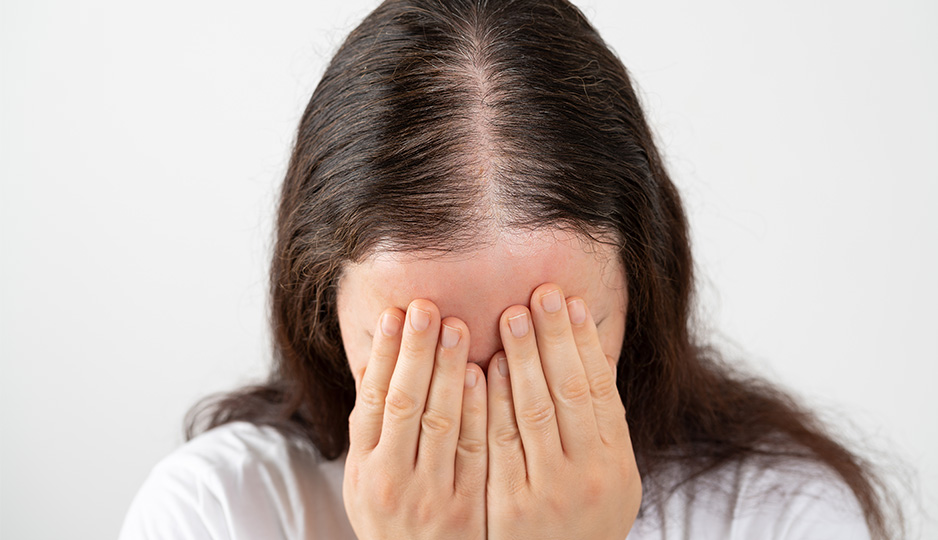Hair loss is a common concern that affects millions of men and women. While the emotional impact of thinning hair or hair loss can be significant for both men and women, the underlying causes and available treatments often differ. Understanding these distinctions is key to identifying the most effective approach for managing hair loss.
Causes of Hair Loss: Hormones, Genetics, and Beyond
The most prevalent cause of hair loss in men is androgenetic alopecia, commonly known as male pattern baldness. This condition is hereditary and closely linked to the hormone dihydrotestosterone (DHT), which gradually shrinks hair follicles and shortens the hair growth cycle. It typically begins with a receding hairline or thinning at the crown and can progress over time.
Women may also experience androgenetic alopecia, though the pattern differs. Rather than a receding hairline, women often notice thinning across the scalp, particularly along the part line. Female hair loss can be influenced by a broader range of factors, including hormonal fluctuations (from pregnancy, menopause, or birth control), thyroid dysfunction, nutritional deficiencies, and physical or emotional stress. Additionally, certain hairstyles that exert tension on the scalp may contribute to hair loss.
Diagnosis: A Gender-Specific Approach
For men, diagnosis is often straightforward, especially when there is a family history of hair loss. In contrast, diagnosing hair loss in women may require a more comprehensive evaluation. Blood tests may be necessary to assess hormone levels, iron status, and thyroid function. For both men and women, a thorough examination will also include a review of lifestyle factors and medical history. This multifaceted approach helps identify potential underlying causes and guides treatment decisions.
Treatment Options: Tailored Solutions for Men and Women
- Topical Minoxidil (Rogaine): Minoxidil is the only FDA-approved topical treatment for both men and women. It works by increasing blood flow to the scalp and stimulating hair follicles. While it does not cure hair loss, it can slow progression and promote regrowth in some individuals. Consistent use is essential for maintaining results.
- Oral Finasteride (Propecia): Finasteride is an FDA-approved oral medication for men that reduces DHT levels, thereby slowing hair loss and, in some cases, promoting regrowth. It is not recommended for women, particularly those who are pregnant or may become pregnant, due to potential risks to fetal development.
- Low-Level Laser Therapy (LLLT): Devices such as laser caps and combs use light energy to stimulate hair follicles and improve circulation. LLLT is considered safe for both men and women and may be a beneficial adjunct to other treatments, though results can vary.
- Lifestyle and Nutritional Support: For women, addressing stress, hormonal imbalances, and dietary deficiencies can significantly impact hair health. While lifestyle changes may not reverse genetic hair loss in men, they can support overall scalp and follicle health.
Emotional Considerations
Hair loss can affect self-esteem and confidence, regardless of gender. For men, it may be perceived as a sign of aging, while women often associate hair with identity and femininity. Acknowledging the emotional aspect of hair loss is essential, and having the support from the team of experts at LH Hair can be empowering.
Although hair loss affects both men and women, the causes and treatments are not one-size-fits-all. At LH Hair, we understand these distinctions and customize each client's treatment plan with targeted strategies that align with their unique needs.
Whether through medical intervention, lifestyle changes, or supportive care, managing hair loss is possible, and no one has to navigate it alone. To learn more about how the causes and treatments for male and female hair loss differ, contact us today and schedule your FREE initial consultation.



